

Figen Gul
Digital Architecture
Studio readings. KAUM. Augmented Reality. Digital Fabrication. Architecture. Stal. VIDEO: Antoine Picon (Harvard Graduate School of Design) at the Digital Crafting Symposium, Copenhagen 2011 « (C)ODE-(C)OLLECTIVE: Digital Learning + Script + Code Collective. Antoine Picon (Harvard Graduate School of Design) at the Digital Crafting Symposium, Copenhagen 2011 from CITA on Vimeo.

Antoine Picon (Harvard Graduate School of Design) presenting at the second DigitalCrafting Symposium 2: Consequences, Copenhagen Friday 25.11.2011. The second Digital Crafting symposium discussed the future perspectives for a new integrated digital practice. Inviting practitioners from the fields of architecture, engineering and theory to share their experiences and present recent work, the symposium unfolded new visions for thinking the links between design, analysis and fabrication. With a focus on interdisciplinary collaboration, bottom up thinking and complex modelling it asked how the shared digital platform can create new material strategies for design.digitalcrafting.dk/?
RESOURCE: WeWantToLearn – Digital Archive for Academia « (C)ODE-(C)OLLECTIVE: Digital Learning + Script + Code Collective. Deleuze’de Zaman-İmge Üzerinden “Oluş İçinde Hakikati Yaratan Yanlışın Gücü” _Burçin Başyazıcı Kulaç. Deleuze için felsefenin kavram üretmesi gibi, sinema da imge, hareket ve düşünce üretir.
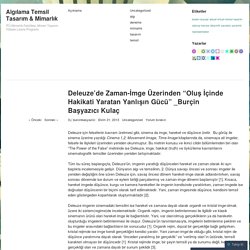
Bu görüş ile sinema üzerine yazdığı Cinema 1,2; Movement-Image, Time-Image kitaplarında da, sinemaya ait imgeler, felsefe ile ilişkileri üzerinden yeniden okunmuştur. Bu metnin konusu ve ikinci cildin bölümlerinden biri olan “The Power of the False” metninde ise Deleuze, imge, hakikat (truth) ve öykü/leme kavramlarını sinematografik temsiller üzerinden yeniden tartışmaktadır. Tüm bu süreç başlangıçta, Deleuze’ün, imgenin yarattığı düşünceleri hareket ve zaman olarak iki ayrı başlıkta incelemesiyle gelişir. Selected Bibliography by Author. Open Textbooks Adapted and Created by BC Faculty. Digital Bauhaus Summit. Internet Archive: Digital Library of Free Books, Movies, Music & Wayback Machine.
Books by People at Edge.org. Association for Educational Communications and Technology. Handbook of Research for Educational Communications and Technology. A Project of the Association for Educational Communications and Technology Edited by David H.
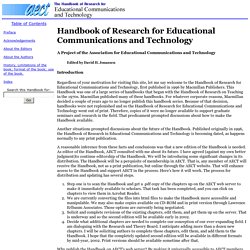
Jonassen Introduction Regardless of your motivation for visiting this site, let me say welcome to the Handbook of Research for Educational Communications and Technology, first published in 1996 by Macmillan Publishers. This Handbook was one of a large series of handbooks that began with the Handbook of Research on Teaching in the 1970s. Another situations prompted discussions about the future of the Handbook. Handbook of Research for Educational Communications and Technology. Computing. How will the HBP be different from classical Artificial Intelligence?
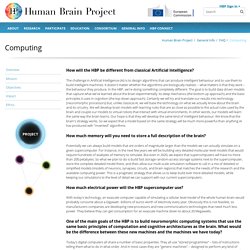
The challenge in Artificial Intelligence (AI) is to design algorithms that can produce intelligent behaviour and to use them to build intelligent machines. It doesn't matter whether the algorithms are biologically realistic – what matters is that they work – the behaviour they produce. In the HBP, we're doing something completely different.
The goal is to build data driven models that capture what we've learned about the brain experimentally: its deep mechanics (the bottom up approach) and the basic principles it uses in cognition (the top-down approach). Certainly we will try and translate our results into technology (neuromorphic processors) but, unlike classical AI, we will base the technology on what we actually know about the brain and its circuitry. How much memory will you need to store a full description of the brain? How much electrical power will the HBP supercomputer use? Computational Thinking for Educators - Course. What: A free online course helping educators integrate computational thinking into their curriculum Who: Humanities, Math, Science, and Computing educators When: All of the course materials are available as a self-study program.

Teaching in a Digital Age › Log In. Creative Design in Industry and Architecture. Authors: G.
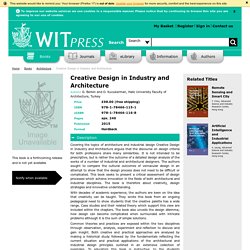
Berkin and O. Kucukerman, Halic University Faculty of Architecture, Turkey. TC Projects - OISTAT. Top ten brains of the digital future « Prospect Magazine. Above: digital consumers are living for the first time in a culture where being part of a globally interconnected group is normal When we refer to something digital—a film, a book, a song—we simply mean that it exists as a string of ones and zeroes within a machine.
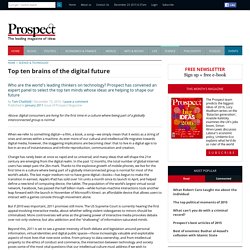
As ever more of our cultural and intellectual life migrates towards digital media, however, the staggering implications are becoming clear: that to live in a digital age is to live in an era of instantaneous and infinite reproduction, communication and creation. Change has rarely been at once so rapid and so universal; and many ideas that will shape the 21st century are emerging from the digital realm. In the past 12 months, the total number of global internet users has swept past the 2bn mark. Thanks to the explosive growth of mobile phones, we live for the first time in a culture where being part of a globally interconnected group is normal for most of the world’s adults.
The Prospect panel. Exploration Architecture philosophy - Exploration Architecture. Innovating and collaborating to address the major challenges of our age We use biomimicry to develop new strategies, to radically rethink existing building types and devise a completely new approach to the design process.
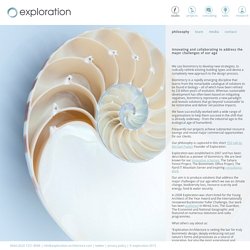
Biomimicry is a rapidly emerging discipline that learns from the remarkable catalogue of solutions to be found in biology – all of which have been refined by 3.8 billion years of evolution. Whereas sustainable development has often been based on mitigating negatives, biomimicry represents a new paradigm and reveals solutions that go beyond ‘sustainable’ to be restorative and deliver net positive impacts. We have successfully worked with a wide range of organisations to help them succeed in the shift that is already underway - from the industrial age to the ecological age of humankind. Frequently our projects achieve substantial resource savings and reveal major commercial opportunities for our clients. A Daily Dose of Architecture.
Virtual Worlds Education Wiki. Augmented Reality and Assistive Technology Lab, Singapore. Augmented Reality AR AR is a novel form of human-machine interaction that overlays computer-generated information on the real world environment.
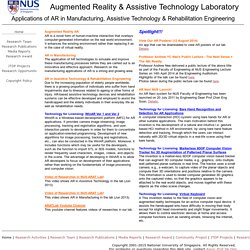
It enhances the existing environment rather than replacing it as in the case of virtual reality. AR in Manufacturing The application of AR technologies to simulate and improve these manufacturing processes before they are carried out is an innovative and effective approach. Research on the manufacturing applications of AR is a strong and growing area.
Resources: Mycoremediation & Fungal Bioremediation - Transition Whatcom. CreativeIndustries. Biomimetic Architecture. ….yet another script? My Library. 3D to 2D to 3D. Ihb87btuyf by john jacobson. Guest Lecture for Archi 120: Architectural Diagrams. Digital Tools For Architects. White Noise. White Noise elvation White Noise side view White Noise Detail White Noise Detail: air bubbles create opacity and white color.
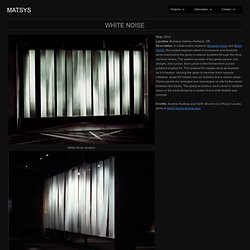
Links. 4. RhinoNEST. 1 Draw a rectangle according to the size of material. Select RhinoNest > Optimize objects position. 2 Click select objects and selects all the ribs. 3 Click Unique sheet 4 You can input the sheet of the material or select the rectangle drawn in step 1 by clicking Select sheet 5 Enter Distance Items to items, Distance items to sheet, Nesting per Sheet and Freedom. Developable surfaces. /// This article is extracted from Mårten Nettelbladt’s works. Have a look to his reasearch blogs, here and here /// DEFINITION. Forms are called ‘developable’ or ‘single curved’ when they can be created through ordinary bending of a planar surface without stretching, cutting or wrinkling the material.
These surfaces are characterized by only bending in one direction at a time, like the cylinder or the cone. Developable surfaces are useful because they allow round forms to be made out of flat materials like plywood, sheet metal or cloth.